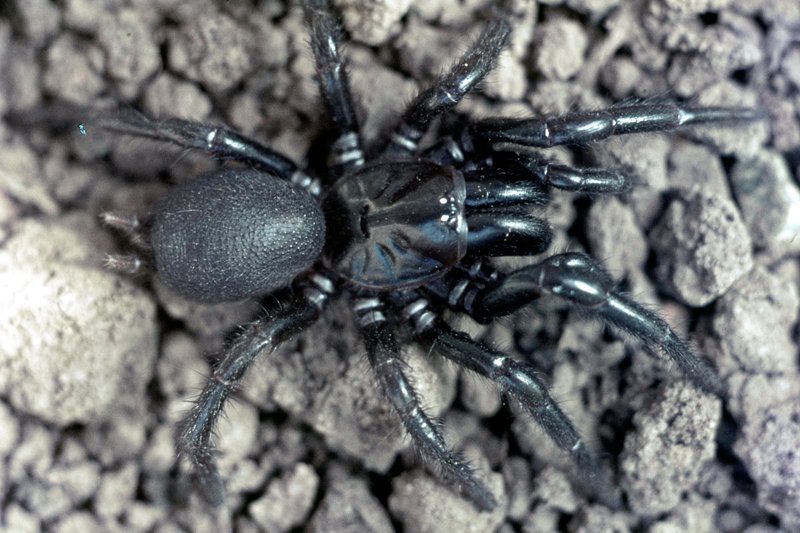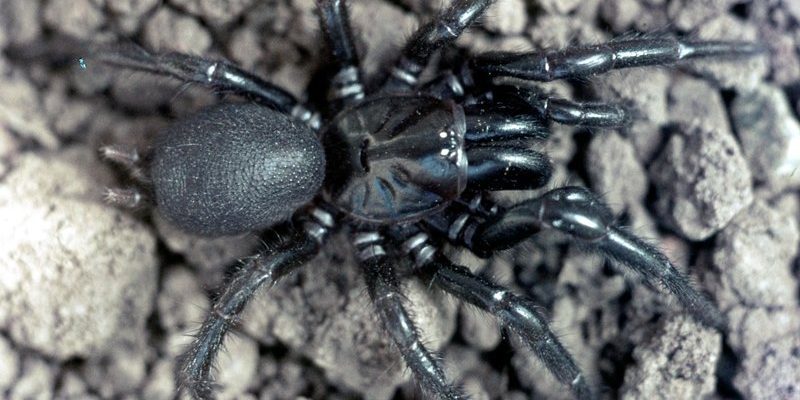
The Australian Funnel-Web Spider is one of the most notorious arachnids in the world. Found primarily in Australia, these spiders are more than just their scary reputation. They’re fascinating creatures with a unique lifestyle and important roles in their ecosystem. Imagine opening your front door and stepping into the wild world of spiders, where curious hunters weave intricate webs, waiting patiently for unsuspecting prey. The Australian Funnel-Web Spider takes it to another level with its distinct funnel-shaped webs and aggressive demeanor when threatened.
First discovered over a century ago, these spiders have captivated scientists and frightened many others. They can vary in size and color, bringing diversity to the already colorful Australian wildlife. While they might look intimidating, they play a crucial role in controlling insect populations, showcasing the delicate balance of nature. Let’s dig deeper into what makes these spiders so unique and vital to their environment.
Physical Characteristics
When you take a closer look at the Australian Funnel-Web Spider, a few traits stand out. They typically range from 1 to 5 centimeters in body length, with some specimens boasting leg spans of up to 12 centimeters. Their bodies are often glossy black or dark brown, providing excellent camouflage against the forest floor. This coloration can be as striking as it is practical; it helps these spiders hide from prey and predators alike.
One of the most distinctive features of the Australian Funnel-Web Spider is its large, robust fangs. These fangs can deliver powerful venom, which they use to paralyze their prey. Imagine having the ability to take down a meal almost instantly — that’s the power these spiders wield. Additionally, their eyes are quite large and can vary in number based on the species, giving them an acute sense of sight to spot incoming threats or potential food.
Their webs, shaped like funnels, are more than just homes; they’re intricate traps. These webs are designed to ensnare any unfortunate insect that wanders too close. The spider waits at the bottom of the funnel, ready to pounce the moment its prey lands. It’s a strategy that has proven effective for millions of years, showcasing nature’s efficiency.
Habitat and Distribution
The Australian Funnel-Web Spider has a range that extends throughout the southeastern parts of Australia. You’ll mostly find them in moist, shaded environments such as forests, grasslands, and even gardens. They love to hide beneath rocks, logs, or leaf litter, where they can instantly retreat to their webs. If you were to explore these areas, you’d likely feel a little thrill every time you catch a glimpse of their characteristic funnel traps.
Interestingly, these spiders thrive in humid conditions. This preference means they are often found in areas with plenty of rainfall, like the coastal regions of New South Wales and Victoria. If the climate gets too dry, they may burrow deeper into the ground, waiting for better weather. Their adaptability allows them to survive in fluctuating environments. You might even find them in urban areas, showing that their territory has expanded alongside human development.
Understanding their habitat is crucial, as it helps researchers track their populations and monitor their interactions with other species. The health of these spiders often reflects the overall health of the ecosystem they inhabit, acting as a barometer for environmental changes. So, the next time you see one, remember they are not just solitary beings; they are part of a much larger web of life.
Diet and Hunting Behavior
What do you think the Australian Funnel-Web Spider likes to eat? You might be surprised to learn that their diet consists mainly of insects. These crafty hunters are known to prey on a variety of bugs, including crickets, cockroaches, and other small invertebrates that come too close to their webs. Their ability to capture and consume prey is a crucial aspect of their survival and contributes significantly to their ecosystem.
The hunting strategy of these spiders is nothing short of fascinating. They remain hidden within their webs, ready to ambush. When a hapless insect stumbles upon the web, the spider senses the vibrations and quickly darts out. With powerful fangs and quick reflexes, it delivers a venomous bite to immobilize its prey. Afterward, it drags the victim back to the safety of its funnel where it will feast. Think of it as a high-stakes game of hide-and-seek, with very real consequences for the unobservant players.
While they primarily eat insects, Australian Funnel-Web spiders can also occasionally consume other small spiders or even small vertebrates if the opportunity arises. This adaptability in their diet further highlights their role as apex predators in their habitat. In short, they keep the insect population in check, allowing the ecosystem to function smoothly.
Venom and Human Interaction
One of the most alarming aspects of the Australian Funnel-Web Spider is its venom. The venom contains a potent cocktail of neurotoxins that can be harmful to humans. However, it’s important to note that bites to people are rare and often occur only when the spider feels threatened or provoked. Its defensive nature is akin to a lion roaring when it feels its territory is being invaded. While the bite can be extremely painful and lead to serious symptoms, fatalities are exceptionally rare since an antivenom is widely available.
If you’re exploring Australia and worried about encountering one of these spiders, knowing how to behave can make all the difference. Generally, it’s best to stay calm and avoid sudden movements if you spot one. Rather than trying to handle it, admire from a distance and give it space. Most bites occur when humans accidentally step on or disturb these spiders in their natural habitat.
Interestingly, the fear surrounding these spiders has fueled a public fascination with them. In many areas, educational programs aim to teach people about the importance of these creatures in the ecosystem. Everything from fun facts to safety tips can help dispel myths and foster a more respectful relationship between humans and spiders. Remember, just like any wild animal, they’re more afraid of you than you are of them!
Reproduction and Lifespan
The reproduction process of the Australian Funnel-Web Spider is quite remarkable. Females typically lay around 100 eggs, which they protect in silk sacs. These sacs can be found hidden in the silk-lined burrows of the female, offering safety to the developing young. It’s almost like a mother hen guarding her chicks, but here, it’s all about survival in a harsh world filled with predators.
After around two months, the spiderlings hatch and will remain with their mother for a short time before venturing out to start their lives. This nurturing nature is somewhat unusual for spiders, as many other species display little to no parental care. What follows is a challenging journey as they must find their own food and fend off predators. Only a small percentage of these spiderlings will reach adulthood, which speaks to the harsh realities of survival in the wild.
Conservation Status
The conservation status of the Australian Funnel-Web Spider is an interesting topic. While they are not currently considered endangered, certain species do face threats due to habitat destruction and climate change. Urbanization and land development can eliminate their natural habitats, forcing them into less suitable environments. As a result, populations can decline, and the delicate balance of the ecosystem can be disrupted.
Conservation efforts are crucial to ensure the survival of these spiders and the overall health of their ecosystems. Researchers and conservationists work to monitor populations and assess the impact of human activities. There is a growing movement towards habitat preservation, which not only benefits the Funnel-Web Spider but also the many other species that share their habitat.
Another important aspect of conservation is education. By learning about the ecological roles of spiders, people can appreciate their importance and feel encouraged to protect them. Awareness programs can shift public perception, turning fear into fascination. After all, these spiders are a vital part of Australia’s unique biodiversity, and preserving them is essential for a healthy environment.
Interesting Facts
| Common Name: | Australian Funnel-Web Spider |
| Scientific Name: | Hadronyche spp. and Atrax spp. |
| Habitat: | Mediterranean forests, grasslands, and urban areas in Australia |
| Size: | 1 to 5 centimeters (body length) |
| Leg Span: | Up to 12 centimeters |
| Diet: | Insects, small invertebrates |
| Lifespan: | 5 to 20 years |
| Conservation Status: | Not endangered, but certain species face threats |
FAQ
Are Australian Funnel-Web Spiders aggressive?
While they have a reputation for being aggressive, Australian Funnel-Web Spiders typically only exhibit this behavior when they feel threatened. When approached, they may demonstrate defensive postures, but they usually prefer to retreat. It’s essential to respect their space and avoid confrontation.
What is the habitat of the Australian Funnel-Web Spider?
These spiders are commonly found in moist, shady environments like forests and gardens. They prefer areas with ample leaf litter or debris where they can build their funnel-shaped webs. Urban areas can also be home to these resilient spiders, especially where they find suitable hiding spots.
How do I identify an Australian Funnel-Web Spider?
You can identify them by their large, glossy bodies and distinctive funnel-shaped webs. They typically have robust fangs and may show aggressive behavior when disturbed. Their color ranges from black to dark brown, providing excellent camouflage in their natural habitat. If you spot a funnel-shaped web, there’s a good chance an Australian Funnel-Web Spider is nearby.
What should I do if I get bitten by one?
If you’re bitten, it’s important to seek medical attention immediately. Try to remain calm and immobilize the affected area to slow down the spread of venom. Avoid applying ice or a tourniquet, as these can worsen the situation. The availability of antivenom has significantly reduced fatalities from bites.
Can Australian Funnel-Web Spiders live in captivity?
Yes, they can be kept in captivity, but it requires appropriate housing that mimics their natural habitat. They need space to build their webs and a controlled environment to thrive. However, keeping them in captivity is not advisable for the average person, as they can be dangerous if mishandled.
How long can the Australian Funnel-Web Spider live?
These spiders can live anywhere from 5 to 20 years, depending on various factors like environmental conditions and predation. Typically, female spiders have a longer lifespan than males, allowing them multiple opportunities for reproduction throughout their lives.
Are they common in urban areas?
Yes, Australian Funnel-Web Spiders can adapt to urban environments. They might be found in gardens, parks, and even within homes, especially in dark, damp areas. People living in these regions should be aware of their presence and understand how to avoid encounters.
How does climate change affect Australian Funnel-Web Spiders?
Climate change can impact their habitat, leading to habitat destruction or alterations in prey availability. Changes in temperature and rainfall patterns can affect their nesting habits and food sources, making conservation efforts crucial to ensure their survival in changing environments.
Is the venom of the Australian Funnel-Web Spider deadly?
While the venom is potent and can cause serious symptoms, fatalities are rare due to the availability of effective antivenom. Most people will experience severe pain and other discomforts, but with timely medical attention, the prognosis is generally good.
Can I keep one as a pet?
While it’s possible to keep Australian Funnel-Web Spiders in captivity, it requires specific conditions and knowledge. They are not typical pets and can pose risks, so it’s best to admire them from a distance in their natural habitat rather than attempting to keep one at home.
What role do they play in their ecosystem?
These spiders are essential for controlling insect populations, acting as natural predators. By preying on various insects, they help maintain the balance of their ecosystems. Their presence indicates a healthy environment, as they thrive in biodiverse areas.

